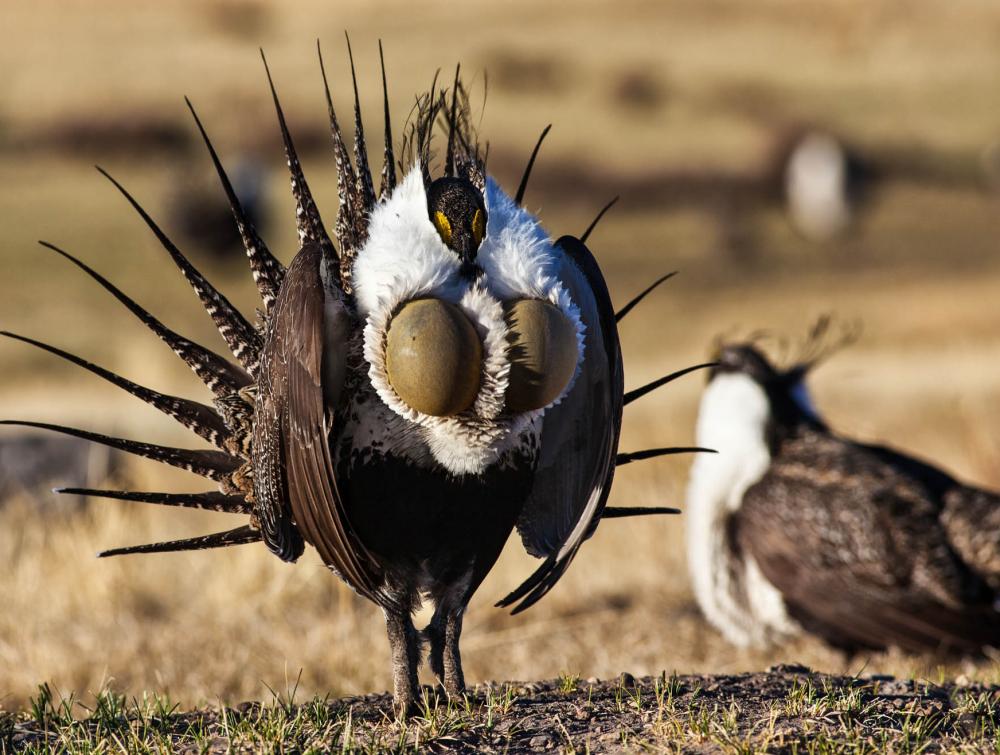BLM finalizes major rollbacks on sage-grouse conservation plans

Greater sage-grouse in Wyoming.
Bob Wick, BLM
The changes threaten the survival of the sage-grouse and the 350 species the sagebrush habitat supports across the West
Today, the Bureau of Land Management (BLM) released its records of decision to amend the 2015 sage-grouse conservation plans, rolling back many of the key protections that are crucial to the survival of the sage-grouse and the 350 species these lands support across the West.
The 2015 plans involved an unprecedented amount of collaboration between over a dozen stakeholders across 11 western states including bipartisan governors, scientists, ranchers and industry. Insulting this historic compromise, the BLM took less than two years to tear apart the main protections of the plans, with the oil and gas industry clearly serving as the key influencers and the public interest left out in the cold.
“These amended plans follow this administration’s pattern of concerning themselves with the oil and gas industry and ignoring conservation and public input, leading this Interior Department to undermine plans that protected a species and an ecosystem from potential extinction,” said Nada Culver, senior counsel and director of the BLM Action Center at The Wilderness Society.
“We now have plans that are less protective from the biggest threats to sage-grouse, and those protections that are remaining are less certain to be applied and do not work together across the landscape. So, of course, we’re concerned and the grouse, if they got to weigh in, would be concerned too.”
The most concerning amendments to the 2015 plans include the removal of the Sagebrush Focal Areas, which were the most protected status of habitat and prevented industrial types of energy development across Wyoming, Idaho, Utah and Nevada. The plans also add waivers, exceptions and modifications for the most meaningful protections that do remain for oil and gas leasing “no surface occupancy” stipulations in priority habitat.
The BLM will also no longer require compensatory mitigation; a practice put in place to counterbalance energy development and other destructive practices to ensure there is a net conservation gain or no net loss of habitat. Without this requirement, when habitat is destroyed, the plans depend on companies to voluntarily compensate for losses or on the states to put in place requirements. Without the guarantee of federal requirements, it is no longer clear how habitat will be maintained.
Other changes remove commitments to prioritizing oil and gas leasing and development outside habitat, remove closures to oil and gas leasing in Colorado and remove protections for general habitat in Utah.
CONTACTS:
- Alex Thompson, Communications Manager, The Wilderness Society, (202) 429-3940, alex_thompson@tws.org
The Wilderness Society, founded in 1935, is the leading conservation organization working to protect wilderness and inspire Americans to care for our wild places. With more than one million members and supporters, The Wilderness Society has led the effort to permanently protect 109 million acres of wilderness and to ensure sound management of our shared national lands. www.wilderness.org
